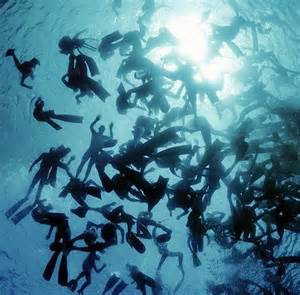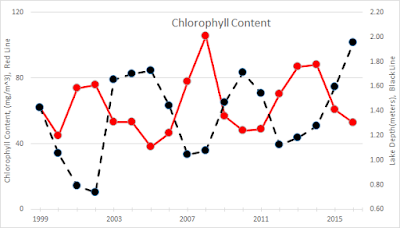I want to write articles on each of Florida's largest lakes. There will be 3 articles on each lake; history, current environmental condition and ecotourism opportunities around the lake. Lake Apopka was first. I plan to get through the top ten lakes over time.
Lake George (also called Lake Welaka from the Timucuans, meaning roughly "chain of lakes") is the second largest lake in Florida. It was once the 3rd largest lake, but the partial draining of Lake Apopka to create the Apopka-Beauclair canal allowed it to move up to second.
 |
| Lake George |
Possibly the first European to see the lake was the Spanish governor of Florida Pedro Menéndez de Avilés in 1596. After the Spanish sold Florida to the British Joseph Bartram explored the area and named it after his patron, King George III of England. Bartram's son William made a large contribution to the ecosystem by importing the first water hyacinths to Florida. What a thing to be remembered for.
 |
| Thanks, Billy Boy |
But the modern era of Lake George started
in the 1850's. Prior to then the St. John's River was a meandering stream that
flowed through many forested swamps and oxbows, only navigable by
canoes or small poled barges. In 1852 it took 2 months to navigate the St.
Johns River from Jacksonville to Lake George. After the Army Corps of Engineers dredged and
straightened the St. John's River it took 9 days via steamboat. River commerce
to Lake George was underway.
After the Civil War commercial
agriculture began on Lake George. The Cypress trees were cut and sent
downstream to the mills. Citrus groves sprouted everywhere. Cattle ranches in Orlando started sending cattle barges up the river and several ranches became established near the lake, though the cattle boom wouldn't happen until the railroads arrived. With fast access to markets in
Jacksonville and beyond there seemed no end to the growth possibilities of Lake George.
The next iteration of Lake George started after the great freezes of 1884-1885 1894-1895. By this time and citrus orchards covered most of the western side of the lake. Banks were lending on easy terms for farmers to open ever more acreage to citrus because of the north's insatiable demand for oranges. But then 2 consecutive years of historically cold winters bankrupted virtually the entire area. The federal government bought over 600 square miles that became the Ocala National Forest in 1908, creating the first national forest east of the Mississippi.
It's hard to overstate the impact of the Ocala National Forest on Lake George. By keeping the western waterflow somewhat natural Lake George never had the really bad water quality issues of many Florida lakes. It also kept the human population below levels that are seen in other areas of Central Florida. Later purchases that created Lake George State Forest and the Lake George Conservation Area meant that over 80% of the Lake George shoreline is in governmental hands today. |
| Orange Gold, or not |
But there were still large changes to come for the Lake George area. The steamboat era ended in about 1900 and the train era began. Trains allowed more people to see the beauty of Florida but didn't bring great changes to Lake George. A little better access, a little more efficient commerce, but not big changes.
 |
| Purchaser of last resort |
The various springs around Lake George suddenly became must visit places. The area changed from agricultural to a tourist destination in a few decades. Springs with medicinal properties to cure all maladies. Springs with hotels built alongside. Springs with zoos and dancing bears. The springs that had once been an afterthought during to the agriculture industry suddenly became what brought people and money to Lake George. And in many ways we're still in that era. The flashiness of the early spring promotion is gone but virtually every spring is crowded all summer to this day.
 |
| Can you direct me to the spring? |
So let's leave Lake George here for now. Next time I'll look at the environmental challenges around the lake.

































